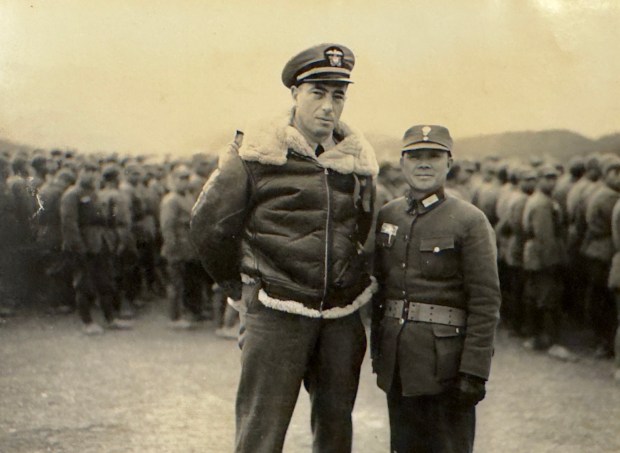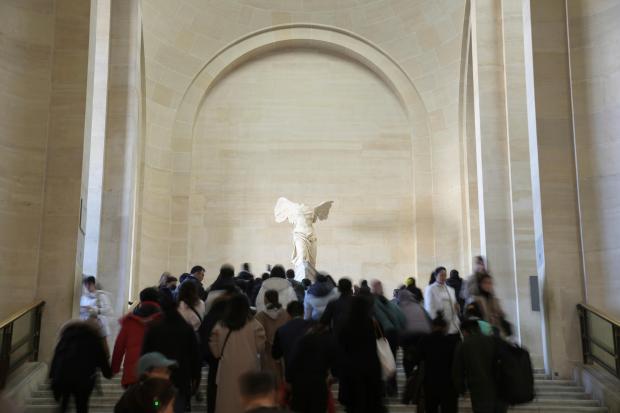When he came back to Chicago for a few days earlier this month, the filmmaker Daniel Halperin visited some old friends, had some fine meals and walked along streets that prompted memories and gave him ghosts, friendly ones mostly.
This trip was on a mission of sorts, another stop on the journey that will help him discover more fully the father he loved and admired.
The principal reason, the “excuse” for the trip (not as if he needed once since he has many friends and relatives here), was to accept the Oak Park and River Forest High School’s Tradition of Excellence Award that was being presented posthumously to his father. He did that on Feb. 13 in the school’s auditorium in front of more than 3,000 students and teachers and others, few of whom had ever met, or even heard of Robert “Buck” Halperin.
“My father graduated from this school in 1927 and has been dead since 1985 so it was stunning to see all those people,” Halperin said. “As I get older I want to learn more about him. I have known the headlines of his life but I am looking beyond.”
Those headlines include …
He was a football star at OPRF, where he was team captain. He went on to play quarterback for coach Knute Rockne at Notre Dame and pro ball with the Brooklyn Dodgers in the National Football League.
He was a war hero, enlisting in the U.S. Navy in World War II and becoming part of what was called Navy Scouts and Raiders, an early version of the Navy SEALs. He helped design landing craft used in the D-Day invasion, and did secret intelligence work before the Allied forces hit the beaches of Normandy.
He was a sailor since his youth and, when no longer a young man, won a bronze medal at the 1960 Summer Olympics, and a gold medal at the 1963 Pan American Games. He later became a member of the Chicago Sports Hall of Fame.
As a businessman, he successfully ran the Commercial Light Company, an electrical contractor and engineering business founded by his immigrant father in 1915. It worked on such projects as Wrigley Field and O’Hare International Airport. He also partnered with sailing buddies Richard Stearns and Gary Comer to start the Lands’ End company in 1963.
Buck Halperin died in Palm Springs in 1985.
“There’s hardly been a day since that he hasn’t been on my mind,” says Dan. “I have the outline of a movie. There is so much material there. But I don’t want this to be a hagiography. But the more I get to know the more I want to know.”
That’s what he’s been doing most of his adult life. The youngest of the three boys of Buck and his wife Margaret (the elder brothers, Patrick and Thomas, are from her previous marriage), Dan grew up on the North Side, attended the Latin School, St. Ignatius College Prep, the University of Notre Dame and UCLA’s film school.
He quickly became a successful rock video producer in Los Angeles and began spreading his cinematic wings. A short film of his, “Rocket to Stardom,” was one of the treats of the 1982 Chicago Film Festival.
He started a family with his wife and frequent collaborator Susan Grant, who had two sons from her first marriage. He then mostly put his creative energies on hold to help care for his father, who had become ill.
After his father’s death, he returned to the movies, when the late Mark Frazel, a friend from his Notre Dame days, introduced him to the brilliant short story “Blight,” by Stuart Dybek. Though work did begin, it was, as often in the movie biz, accompanied by frustration.
It was just another example of how financially difficult the movie business can be. As he told me then when he showed me a “Blight” script, saying, “This is the third draft. It generally takes from two to three years to get financing. I had hoped to start shooting this summer, but the matter of balancing the creative and business sides of the movie took longer than I anticipated.”
A couple of years later, Halperin created “Rosemary,” based on one of the short stories written by the late and prolific writer, Harry Mark Petrakis. It was a moody and good film that begins with a shot of “Nighthawks,” the Edward Hopper painting that hangs in the Art Institute.
His latest release was 2020’s “Bombshells and Dollies,” which I then called a “delightful, polished and enlightening look at the contemporary pinup world.”
He was already talking about this movie about his dad then and now, even as other projects percolate, he’s working on it, though he doesn’t have a title for the film. He needs to raise some money, of course. He has some other movie projects in various stages of development, people want to talk.
He also has a potential audience member. “His name is Kingston, my first grandchild,” he says. “He’s only 4 years old but I want him to know about his great grandfather and I am determined that he will know what a great man my dad was. … That a lot of people will.”
rkogan@chicagotribune.com





